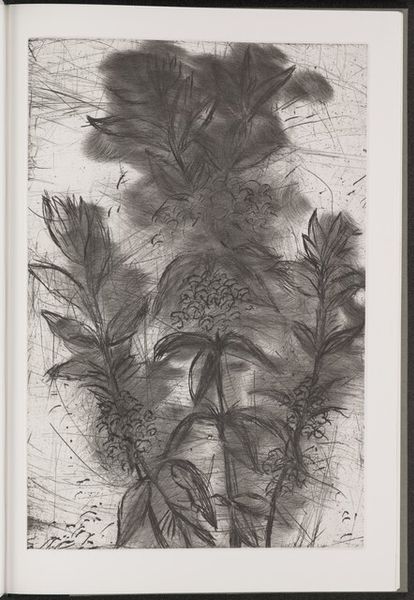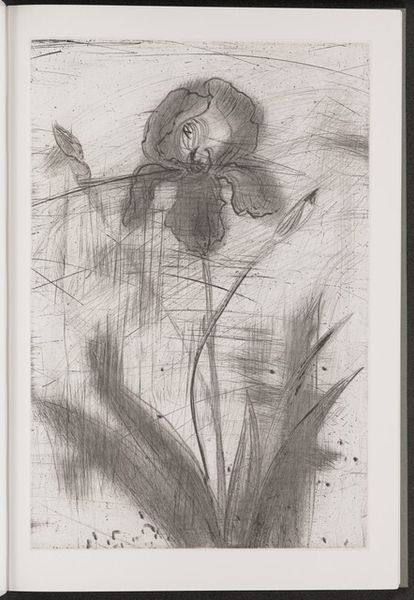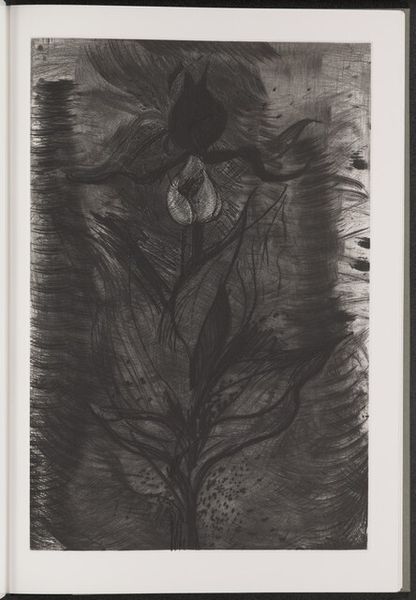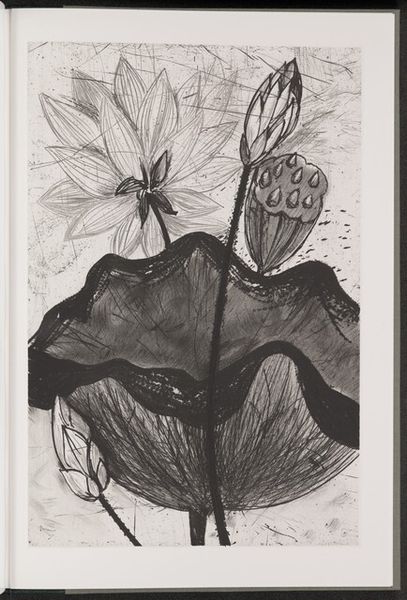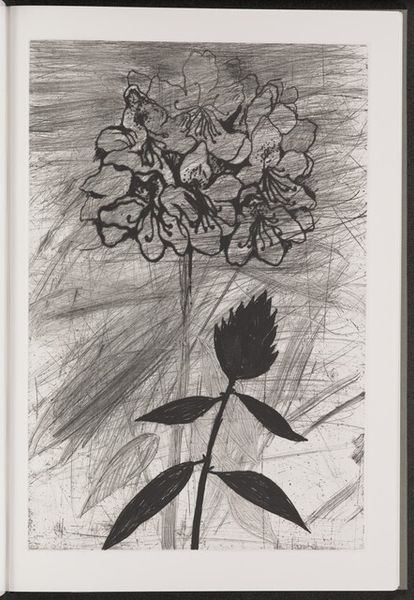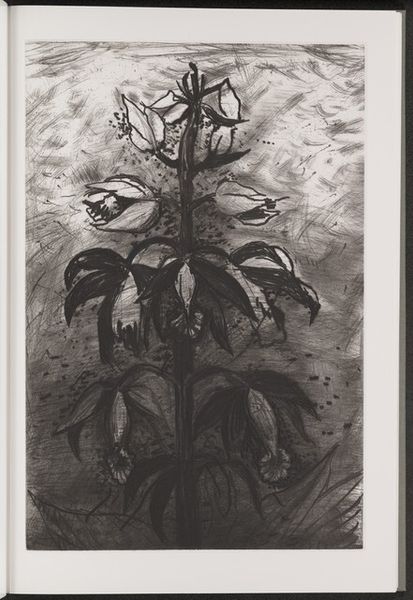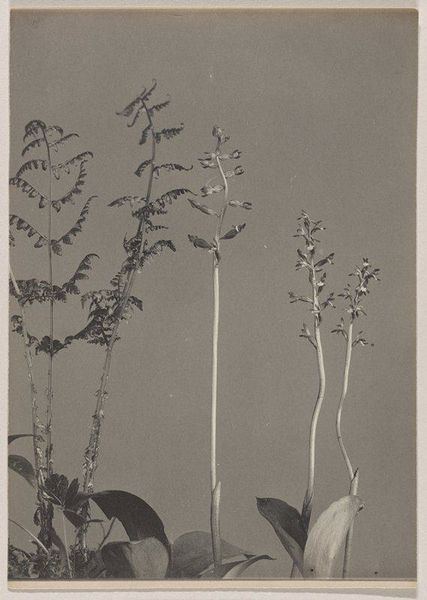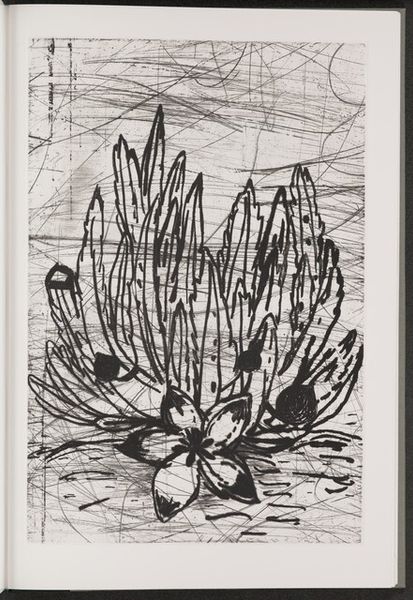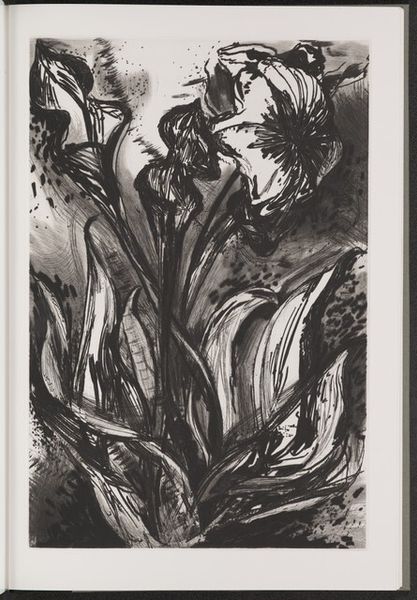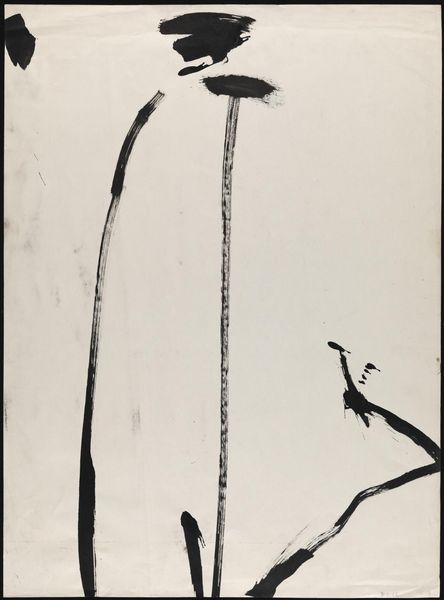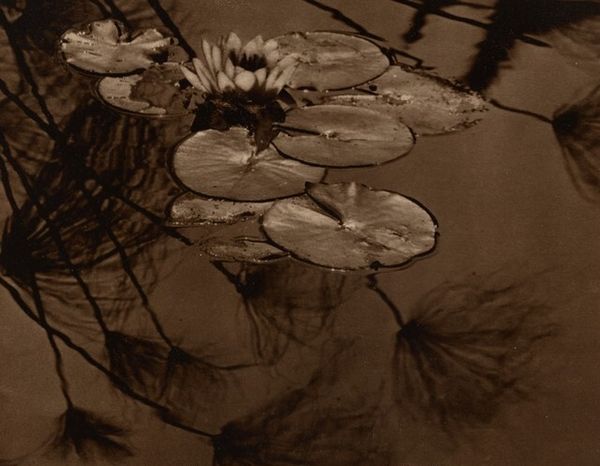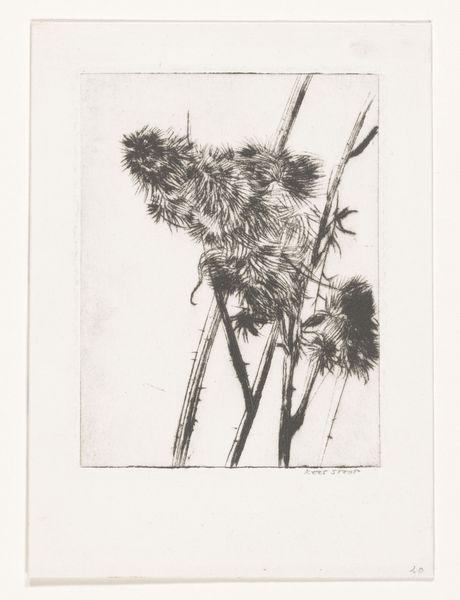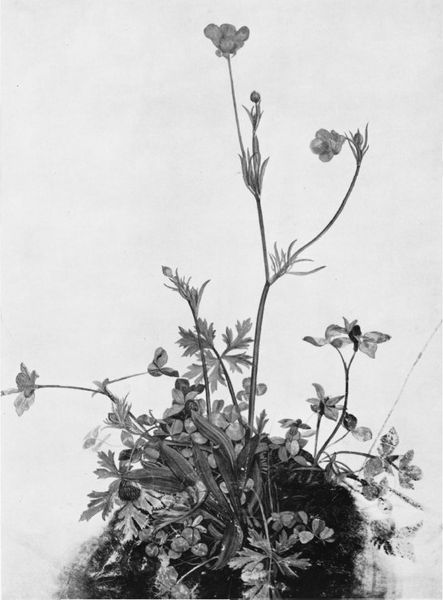
drawing, print, etching
#
tree
#
drawing
# print
#
etching
#
landscape
#
pencil drawing
#
line
#
realism
Dimensions: plate: 45.4 x 30.5 cm (17 7/8 x 12 in.) page size: 52 x 35.5 cm (20 1/2 x 14 in.)
Copyright: National Gallery of Art: CC0 1.0
Editor: We’re looking at Jim Dine's "Powder-Puff Tree," an etching and drawing from 1984. It’s mostly black and white. The immediate feeling is quite delicate but with a touch of darkness, like an illustration from a fairytale. What jumps out at you? Curator: Consider the composition first. Note the central placement of the tree, and the positioning of the two birds, almost framing the subject. Dine skillfully uses line quality here, varying from dense, almost chaotic hatching to the smoother rendering of the tree trunk and the forms of the birds. The density of the lines defines value and creates spatial recession. How do you respond to this interplay? Editor: I find it interesting how the loose, almost frantic lines give the leaves and the surrounding space a sense of movement, a vibrant, almost electric feel, in contrast with the stable verticality of the tree. The composition almost splits in half– the bare trunk below with the dense and frantic, energetic top. Curator: Precisely. That opposition structures the image and charges the contrast of the organic tree versus the geometry of the background. Note the material contrast of paper and etching. We can engage in structural analysis, looking at binaries: solid/void, organic/geometric, chaos/order. Editor: So, the artwork gains its significance from these carefully considered structures. Looking again, the branches are almost chaotic, which contrast so strongly with the perfectly captured stillness of the birds. Would that be another example? Curator: It certainly could. What initially reads as simple illustration then reveals a deeper meditation on nature. Dine explores through pure form. Now do you view the piece with fresh eyes? Editor: I definitely see more to it now. The use of the medium and the balanced contrasts become almost sculptural and less narrative, like a scene suspended in its creation. Curator: Indeed. Semiotics allow to appreciate the work through form, contrast, materiality and visual engagement. Thank you for those brilliant reflections!
Comments
No comments
Be the first to comment and join the conversation on the ultimate creative platform.
